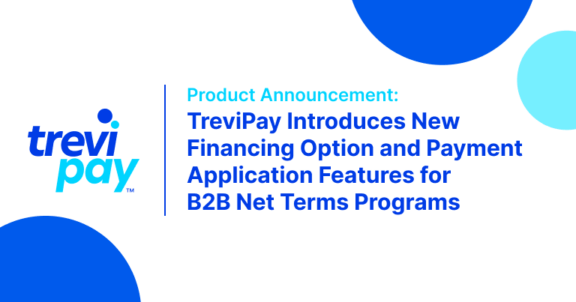News & Insights · Approx. 5 minute read
Brandon Spear Of TreviPay On How To Use Digital Transformation To Take Your Company To The Next Level

“Connect customers with loyalty programs: The more digital processes are, the more you can connect them with loyalty programs and drive retention and share of wallet.”
As part of our series about “How To Use Digital Transformation To Take Your Company To The Next Level”, I had the pleasure of interviewing Brandon Spear. (Originally posted on Authority Magazine).
Thank you so much for joining us in this interview series. Before we dive in, our readers would love to “get to know you” a bit better. Can you tell us a bit about your ‘backstory’ and how you got started?
Of course! I grew up in South Africa where I studied engineering at college. This was around the same time when the Internet was being launched and increasing in popularity. Being in the right place at the right time, I was intimately involved in the founding of Internet Solutions, which was the first commercial Internet Service Provider in South Africa. Capitalizing on the development of the Web and the first browsers, I focused on the development and hosting of corporate WWW sites that then rapidly expanded to include managing firewalls, mail servers and other Internet infrastructure for companies without the skillset to manage this behind their firewalls. I was able to see firsthand how the Internet was changing the way B2C and B2B business was done.
Following, I joined a start-up procurement marketplace company, Quadrem, designed to facilitate the buying and selling of goods in the mining industry. After 10 years, I made the decision to move to the US where the company’s headquarters was located and continued working with Ariba, who acquired Quadrem in 2011, and then SAP, who acquired Ariba in 2013.
Throughout my entire career, I have always been in smaller companies where I felt I could personally be more impactful. One challenge I came to learn working with smaller companies is that they do not always have access to the resources they need to be able to grow. This led me to my next opportunity with TreviPay. Starting in 2014 as Chief Operating Officer, I was responsible for the general operations of the business including financial controls, accounting, FP&A, technology and engineering. The role still enabled me to be very impactful within a standalone business unit, but I was able to expand my experience by also working under the umbrella of a much larger company.
After many years of growth and building a world-class leadership team, I am now the CEO of TreviPay leading our latest journey in B2B commerce and embedded payments solutions.
Extensive research suggests that “purpose driven businesses” are more successful in many areas. When your company started, what was its vision, what was its purpose?
Firstly, I completely align with this perspective. Whether it’s in our personal lives or working career, having a sense of purpose is important. Without this, it is difficult to create culture or a sense of belonging.
When I first joined TreviPay, we had not yet quantified our sense of purpose, and it took us about a year to agree on this overarching vision. We wanted to ensure our purpose was a rallying cry with meaning for everyone — our customers, our employees, the communities we serve — and not just a decision from the top.
With the services we provide, especially for smaller businesses, we are often one of the only sources of accessible working capital to help them grow their company. While it took time and energy, we recognized our purpose was to help businesses grow, and this was something we could all find impactful.
Let’s now turn to the main focus of our discussion about Digital Transformation. For the benefit of our readers, can you help explain what exactly Digital Transformation means? On a practical level what does it look like to engage in a Digital Transformation?
Digital Transformation can mean something different depending on the industry or company, but in essence, it means looking at underlying business processes and understanding what scope there is to create a more digital-first experience for employees, customers and suppliers. A lot of Digital Transformation is driven by competitiveness and how you can optimize the cost of doing business.
The first step is evaluating what aspects of your business could benefit from a digital-first approach, and then fundamentally putting together the projects, tools, software and training in a fashion that can transform the way the businesses operate.
Which companies can most benefit from a Digital Transformation?
A company’s competitive drive is often a catalyst for Digital Transformation, which is happening in many industries. In our business, we are increasingly seeing manufacturers reinventing the way they go to-market as more commerce shifts to online channels. This is changing the traditional ways of selling, where using distributors is no longer the most optimal way to sell. Another industry seeing tremendous shifts towards Digital Transformation is healthcare, as patient records become more digitized, offering a portable history.
We’d love to hear about your experiences helping others with Digital Transformation. In your experience, how has Digital Transformation helped improve operations, processes and customer experiences? We’d love to hear some stories if possible.
Most commonly, Digital Transformation begins occurring in processes closest to the customer first, as this is usually where you see the most competitiveness between companies. The further you get away from the customer, Digital Transformation is usually slower to permeate, such as in back-office activities like HR, finance, accounting or administration. But the COVID-19 pandemic has seemed to pull forward four to five years of Digital Transformation and compressed it into the last 18 months. We used to rely on people sitting next to one another, but many processes began to fail once employees began working remotely.
As an example, we saw an acceleration of Digital Transformation in these back-office activities that used to be very manual. While these processes weren’t necessarily broken before the pandemic, many required staff to be in a specific location that was no longer feasible when working from home, such as manually processing paper cheques.
Has integrating Digital Transformation been a challenging process for some companies? What are the challenges? How do you help resolve them?
Read the full article on Authority Magazine.
Stay up-to-date with the latest from TreviPay
Thank you for subscribing! You will now receive email updates from TreviPay.



